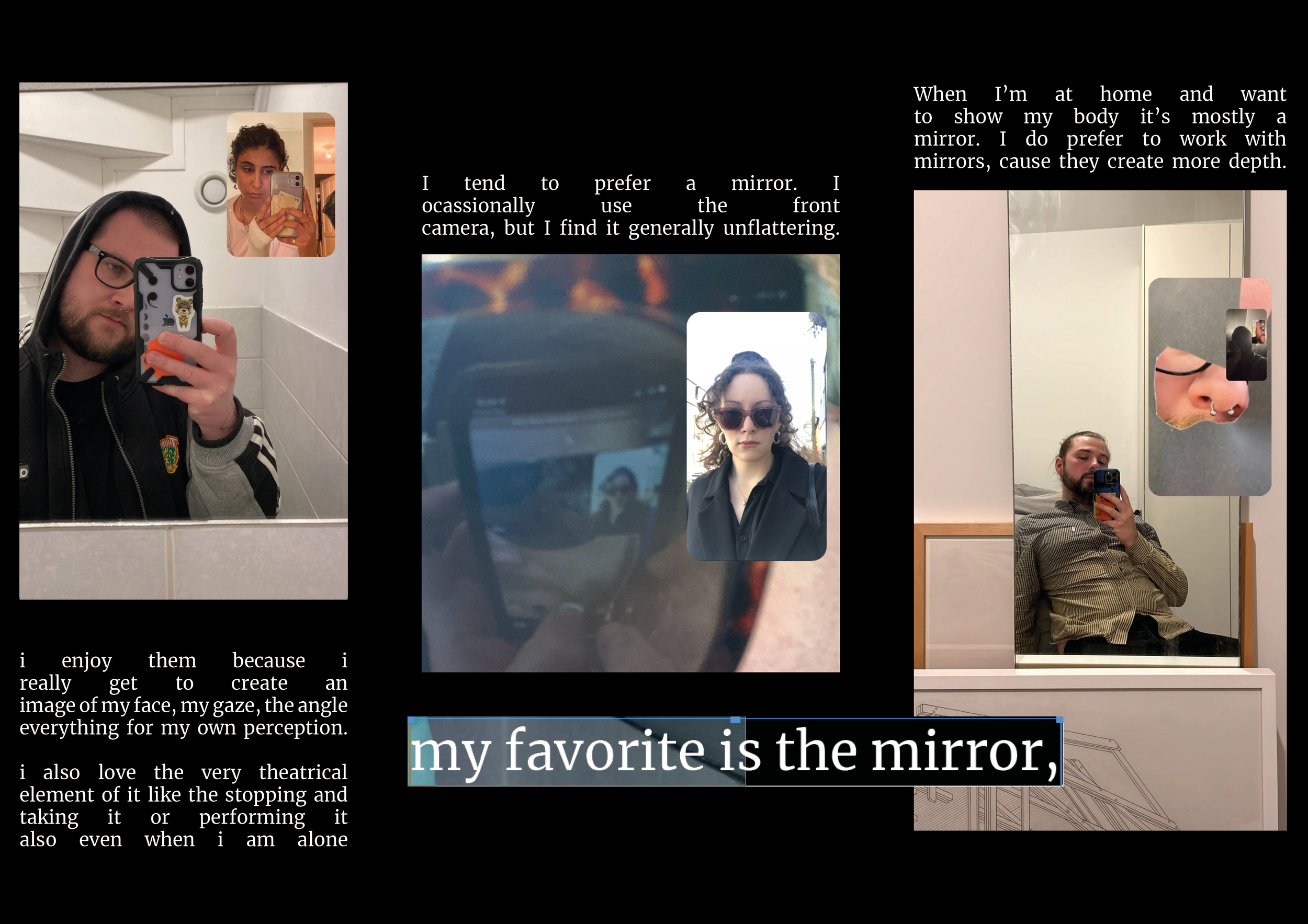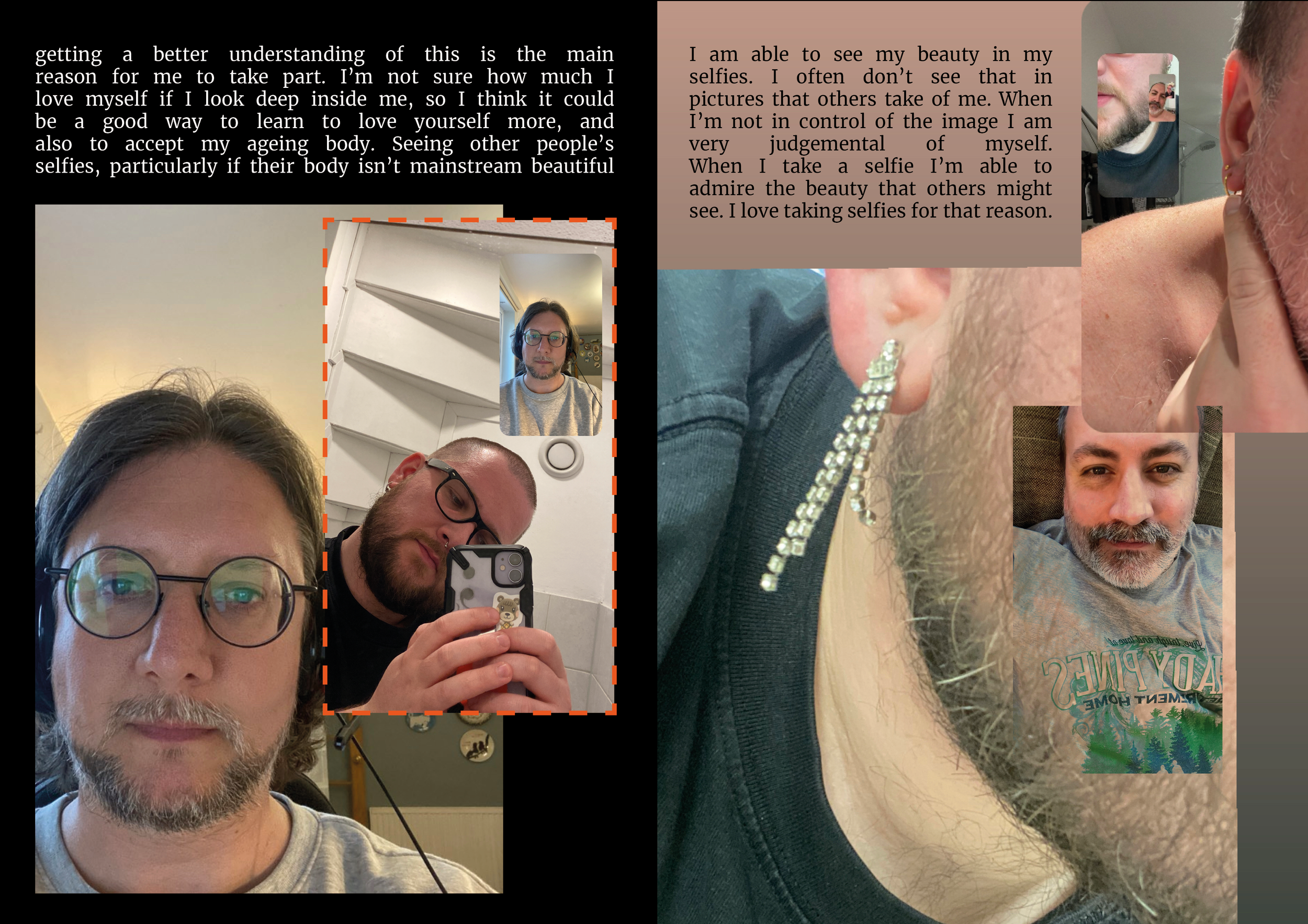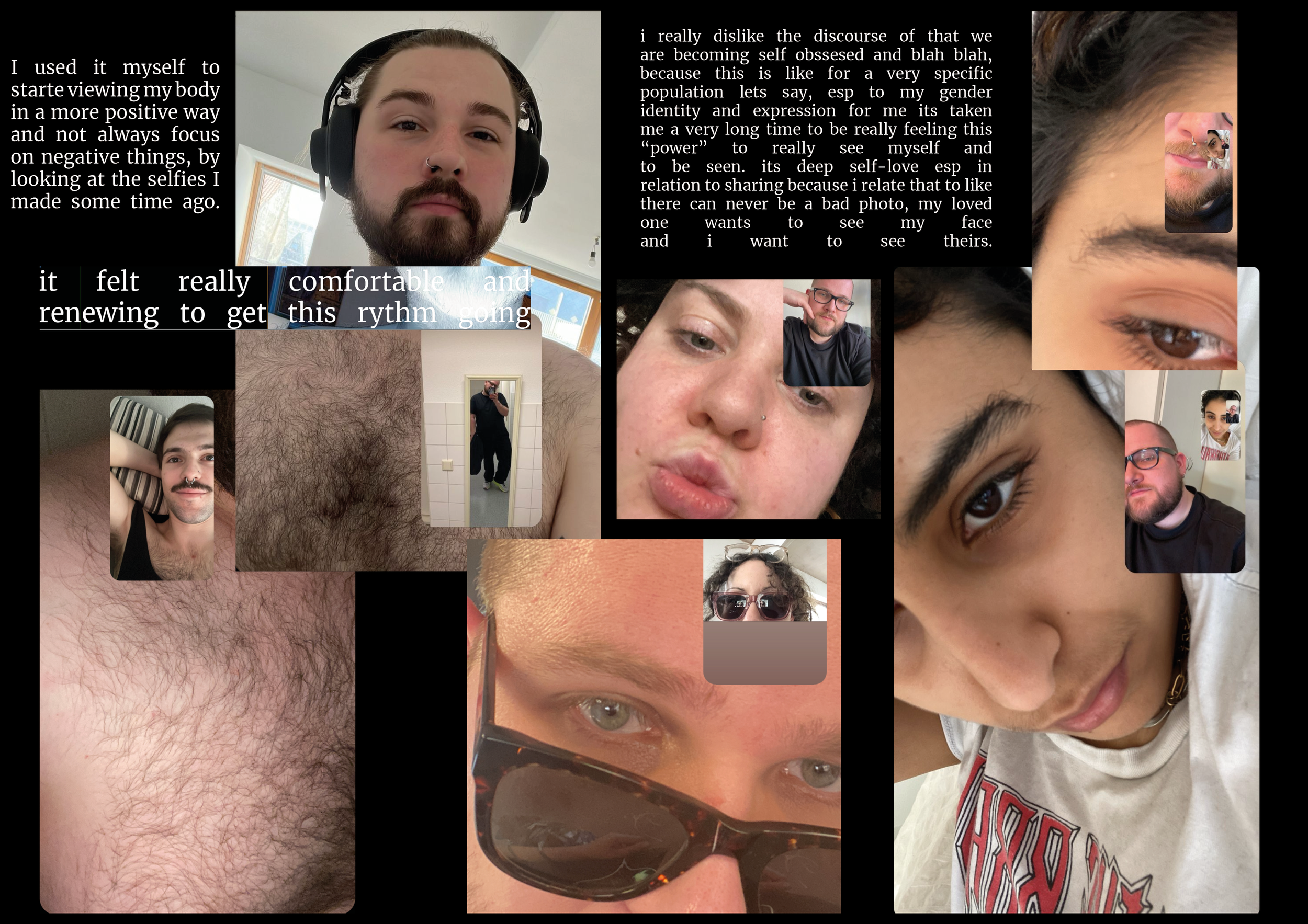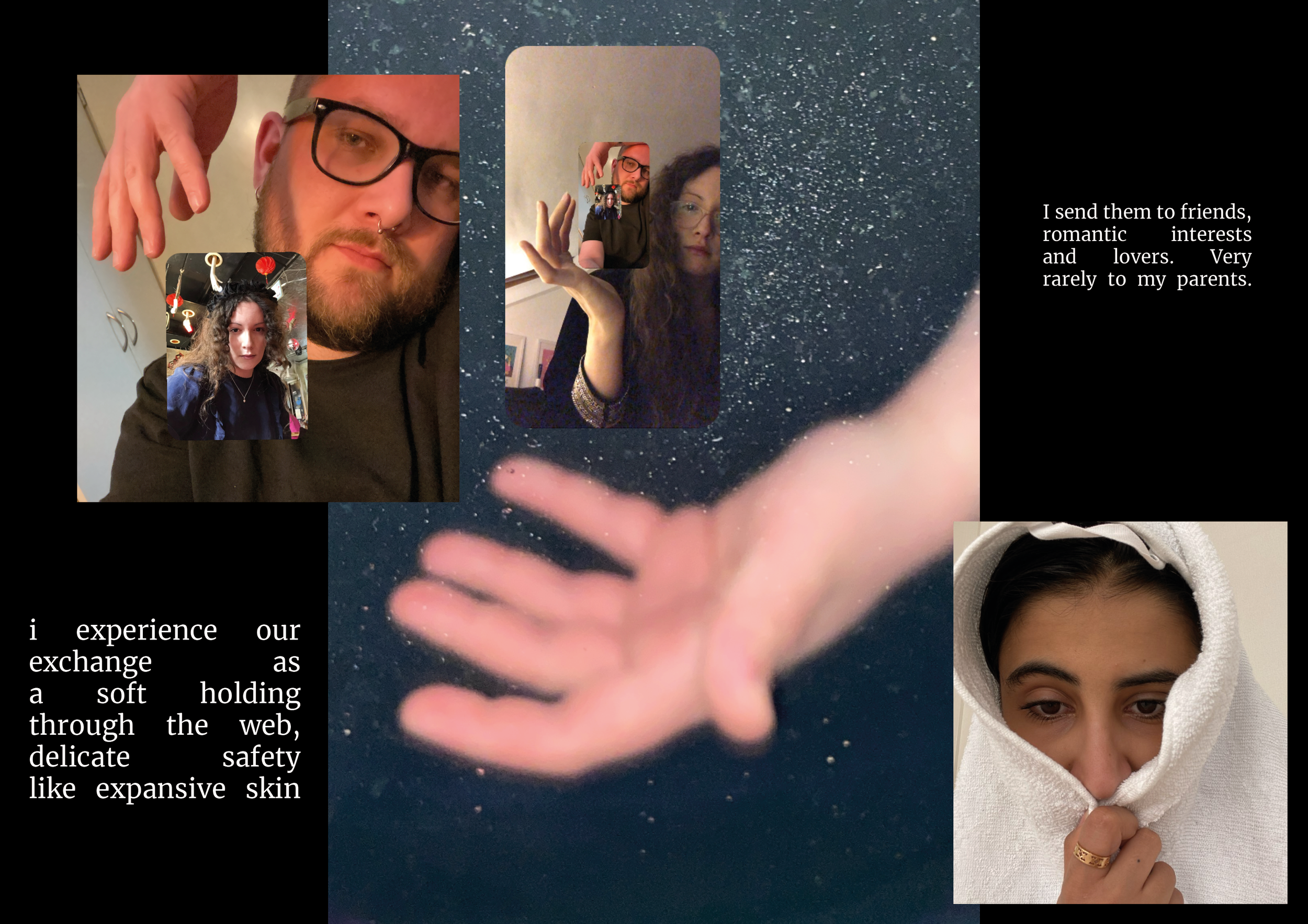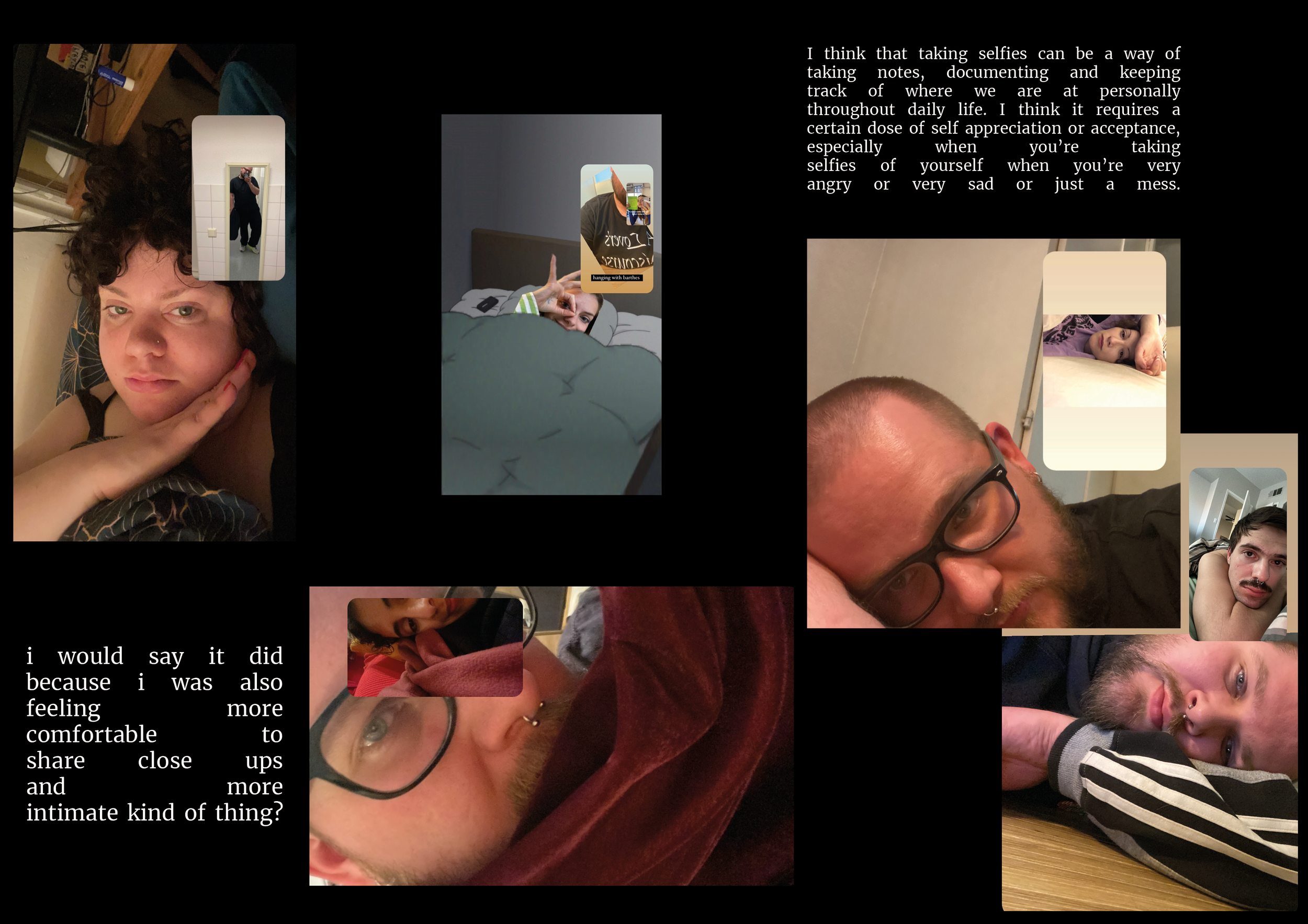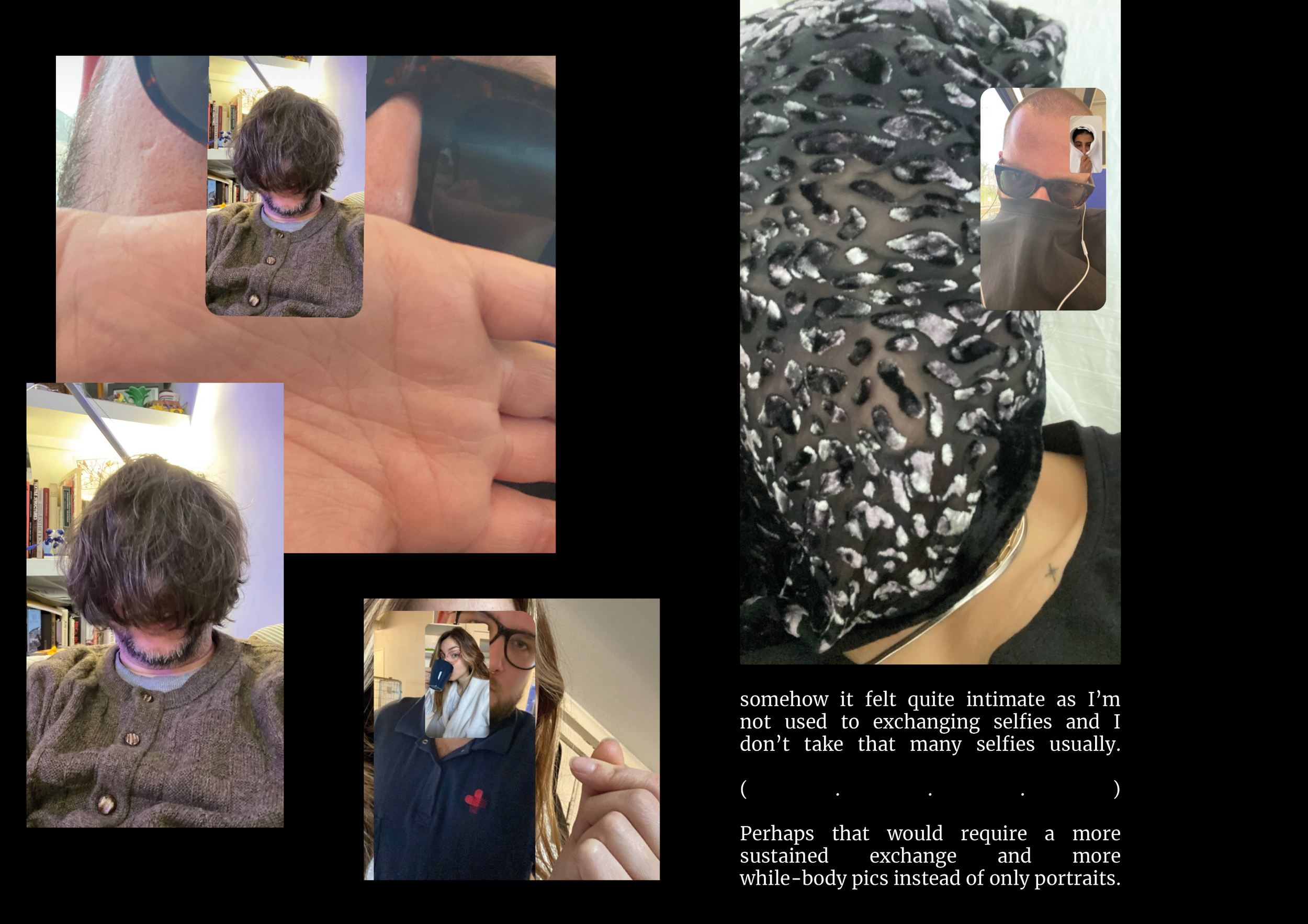Selfieing Together: Exploring the Wider Scope of the Selfie as Self-Love Praxis
Before we start: my sincerest gratitude goes out to the participants of this first cycle of Selfieing Together – Pernilla, Fai, Alex, Leo, Jordan, Maria, Tom, Gilles. Thank you.
An introduction
The industrial and neo-liberal fashion system is notorious for the way it treats the bodies that reside within. From hyper-stylized and objectified representations of bodies in fashion media, to the exploitation of garment workers; from the constant pressure the fashion industry puts on our bodies to be a very specific type of perfect, to the countless rows of uninhabited garments on the pages of the fashion magazine and on the racks of stores: the living, breathing, and sensitive body is often nowhere to be found, or gets hidden from the fairytale that is fashion.
On a micro-scale, I try to intervene in this paradigm by exploring different ways of regaining agency over the body in said system, and subsequently create or reclaim space for those bodies that do not fit the strict norms of industrial fashion. In the ongoing project selfies as self-love praxis, I employ the act of taking and uploading selfies to investigate my own perception of my body, and how this body relates to its surroundings. Additionally, I try to investigate how the selfie can become a tool in dismantling fashionable presumptions about the body, especially when it comes to bodies that exist somewhere outside of the norm.
In this specific installment of selfies as self-love praxis, I have joined forces with fellow selfie-takers. Together with them, I aim to explore how the auto-ethnographic method of taking and uploading selfies works when employed by other people with different bodies and different lived experiences. We will not necessarily be posing another literal critique of the industrial fashion system—even though I believe that emphasizing the carnal, un-regulated, and non-normative nature of our bodies is in itself a critique of industrial fashion. For now, I want to focus on the embodied act of selfieing, and delve into how the method can be shared with others.
This installment takes the shape of a (visual) essay, combining selfie exchanges between the participants and myself, with interviews that were held via Instagram direct messages. With this work, I hope to explore what the wider scope of selfies as self-love praxis could entail and start building an interconnected community of selfie practitioners, as together we can work towards creating a more embodied and inclusive fashion system.
The method
Selfieing Together has several stages. First, the participants were asked the following questions, focusing mostly on the action of taking and uploading selfies.
Before the selfie exchange
Do you take selfies? If yes, how often?
Do you like taking selfies?
Do you take selfies for a particular reason?
Do you post your selfies, or are they just for yourself?
Do you ever send selfies to other people?
What is your preferred selfieing method, for example using the front camera, in the mirror, etc.?
How do you relate to the idea that the “ordinary” selfie can become a self-love praxis?
After I received the answers to the first set of questions, we engaged in an organic and playful selfie exchange, in which we responded (or not) to selfies that we sent to each other. I often used the photo-reply function of Instagram to include both selfie perspectives into one image.
The next stage was another set of questions that the participants answered after our selfie exchange. These questions reflect mostly on how they experienced the selfieing and if their approach to the action has been altered.
After the selfie exchange
How did you experience our exchange of selfies?
Did the background of self-love praxis influence you during the taking of the selfies?
Was your selfieing any different from usual?
Did working on this project change something in the perception of your own body?
“I have found that in engaging with others, the digital realm in which we coexisted made it possible for us to create very personal and open safe spaces where we were able to communicate about our embodied perceptions and feelings. ”
The aftermath
The final stage of Selfieing Together involves the creation of a visual essay, where a selection of selfies and answers are combined on loosely curated pages. In this contribution, I share the first version of such a visual essay, touching upon themes such as the mirror, vanity, softness, connection, body positivity, and the different uses of selfies. The answers of the participants are copied directly into the essay, without editing their grammar or spelling, so as to keep their responses as embodied and personal as possible. I have also chosen to, for now, not engage too much in another analysis or theorization of the participants’ answers, or the themes of each page. This will probably happen in the future of the project.
In this first installment of Selfieing Together, I have been able to engage in a very vulnerable and beautiful manner with my fellow selfie practitioners. The digital infrastructure in which we moved together was key to this. The digital aspect of the selfies as self-love praxis seems apparent: I use my phone to take selfies and upload them onto digital platforms. I have found, however, that in engaging with others, the digital realm in which we coexisted made it possible for us to create very personal and open safe spaces where we were able to communicate about our embodied perceptions and feelings. There was no specific and physical time or place that kept us separated: we were able to selfie together across continents and time zones. This decentralized approach to creating space and coexisting within these spaces is something I would like to explore further. I am also curious how this method could grow in the future, and how it can remain connected to my personal selfies as self-love praxis. The results show that selfies could indeed be of great importance in questioning the paradigms that are disciplining our bodies; harnessing their unfiltered power could result in a radical approach to the body per se, and especially to the body within the industrial fashion system.
Note: All images in the visual essay were made in collaboration and conversation with Pernilla, Fai, Alex, Leo, Jordan, Maria, Tom, and Gilles. Assemblage of visuals and texts by Chet Julius Bugter.
